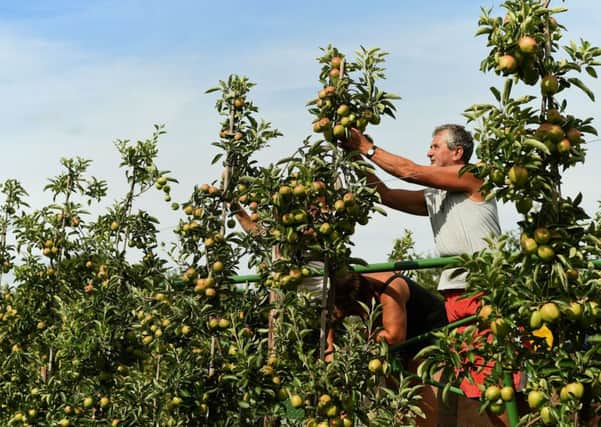The dangers faces your fruit trees


An example is tugging unripe fruit away from the stem which can break fruiting spurs and damage stems causing the remaining fruit not to ripen.
Birds create the most problems with fruit by eliminating the ripening crop. Netting is the only answer either as a temporary cage or permanent walk-in cage.
Advertisement
Hide AdAdvertisement
Hide AdAnother problem which can affect fruit is blossom drop. Fruit bushes can be healthy but frost occurred when the bushes were in flower, or pollination was not right due to wet and cold weather or very dry air at blossom time.


Frost is a real problem to soft fruits. With open blooms of strawberries the petals may seem okay but the central core will turn black and the flowers will fall off.
The most serious pest for blackcurrants is the gall mite. These mites are carried by the wind or other insects to the bushes and by July they will have entered the buds which swell and become less pointed. These big buds will wither. In the winter inspect the bushes and pick off any enlarged buds.
Spray fruit bushes as soon as they come into leaf using a bug killer which will protect the bushes against lots of pests such as blackcurrant eelworm and gall midge aphids.
Advertisement
Hide AdAdvertisement
Hide AdThere are various mildews that cause problems as well so spray with Supercarb once the first flowers open then repeat every couple of weeks. Targets for mildew include greenhouse and outdoor grapes, strawberries and gooseberries. If your garden contains a vegetable patch a row of cordon apples can be grown as a screen. Make sure the trees are on the dwarfing root-stock Malling 9 and plant three feet apart.
It is preferable to buy maidens (one year old trees) rather than older ones and if possible avoid planting tip-bearing varieties (those that carry most fruit at the end of the stems).
Cordons should be planted at an angle of 45 degrees and sloping from south to north. Clematis wilt (the fungus ascochyta clematidina) quite often attacks the whole plant which suddenly wilts and dies down to ground level. In most cases the plant will be lost but to protect new plants against this plant with six inches of the stems underground.
As the wilt attacks at soil level cut off the dead plant and the stems under the soil will produce new growth.